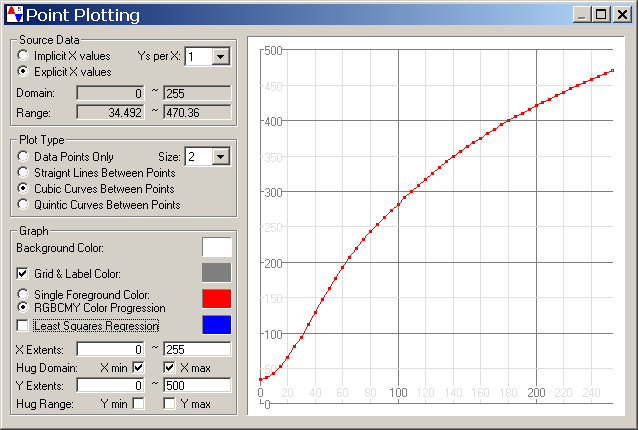
Text Editor
OmniGlyph's integrated text editor was written first, and was then used to create the remainder of the program code. It is first and foremost a code editor, but is serves well as an interactive text processor for PCB and Schematic files. Many innovative features are available to the programmer writing in Assembler, C++, VHDL, or HTML. Some, such as interactive file comparison and HTML image mapping, are found nowhere else.

Syntax Highlighting.
Textual data files are processed based on their file suffix code, with
individual and specific algorithms for C++, Assembler, VHDL, and HTML.
Assembler code has the simplest algorithm, with code displayed in black,
numeric and character literals in purple, and comments in blue. Within
the code portion of a C++ program, an additional algorithm is applied
to display reserved words in green. HTML and VHDL have the most complex
syntax and have one more algorithm to display keywords in dark purple.
The above example shows two C++ code modules.
File Comparison.
With a text file in each of two side-by-side sibling windows, a line-by-line
comparison can be performed between the two data sets. As differences are
encountered, the files will be vertically aligned and the differences will
be marked for display. If desired, updates or modifications can be made to
either of two files and the comparison may be resumed at any point. This
feature finds its greatest utility when looking for changes made between two
similar pieces of code or between two different versions or releases of the
same code. In the example shown above the mismatched sections are not even
of equal length.
Spell Checking.
Within the comments of program code files, the body of HTML files, and the
entirety of text files, each and every word is checked against a lexicon to
verify its spelling. Misspelled words are displayed in red. The code
portion of program files is not examined for spelling. The basic lexicon of
approximately 90,000 words can be easily updated by the user. The above
example shows a pop-up menu with a selection of possible alternate words.
In this case the word "ChiLin" is actually a valid product name that is
simply not in the lexicon.
Global Text Search.
The text search argument can contain "wildcard" characters and special
matching codes (UNIX general expressions) and can search across
multiple source data files. The Search and Replace routine
shares the same search algorithm. In the example above you will find the
Locate Text dialog box along with its pop-up context help
for the search argument string.
Data Base Management.
Columnar data (such as that found in a spread sheet) are processed as a
special case within a text file. For capability, CSV (Excel) and DBF
(DBASE) files can be read and CSV files can be written. Data base files
are required by the GIS processor which uses a blend of columnar and keyword
data.
Text Line Sorting.
If your data set can be arranged into lines and columns (such as d-base data
mentioned above) a vertical column can be defined and the individual lines
can be sorted to lexicographic order on the text in that column. This
feature finds little utility outside of data base processing.
Graphical Point Plotting.
Tables of numeric data can be plotted onto an XY graph with optional linear,
cubic, or quintic interpolation between the points. Multiple data sets can be
plotted together and a "least squares" regression can be applied to the data
to find a straight line that best fits the data points.

